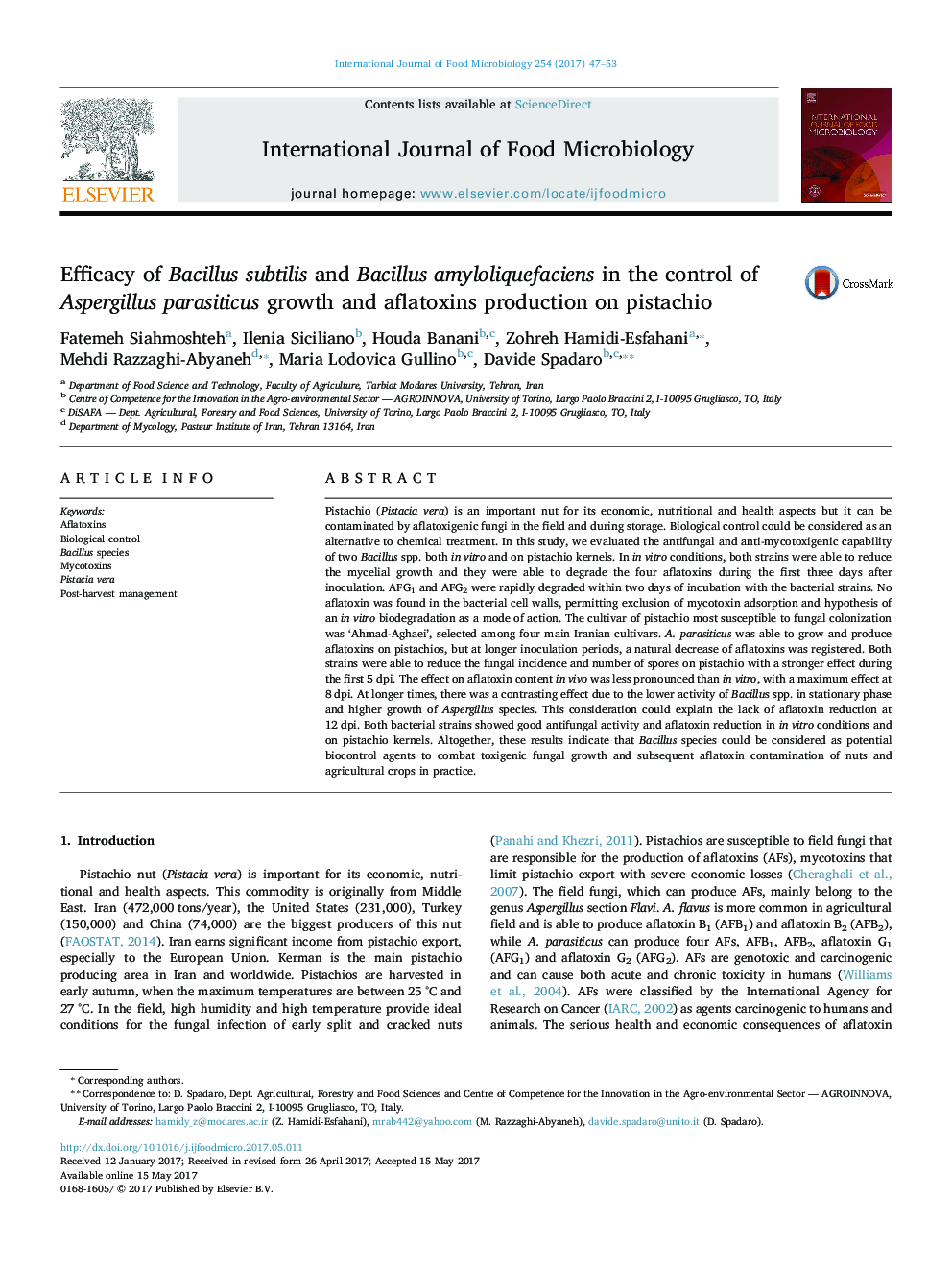| کد مقاله | کد نشریه | سال انتشار | مقاله انگلیسی | نسخه تمام متن |
|---|---|---|---|---|
| 5740693 | 1616529 | 2017 | 7 صفحه PDF | دانلود رایگان |

- The most susceptible cultivar of pistachio to A. parasiticus was 'Ahmad-Aghaei'.
- Soil bacterial strains decreased aflatoxins content and mycelial growth in vitro.
- Two Bacillus strains reduce the fungal incidence and number of spores on pistachio.
- Effect of Bacillus strains on aflatoxins in vivo was higher at 8Â days from inoculum.
Pistachio (Pistacia vera) is an important nut for its economic, nutritional and health aspects but it can be contaminated by aflatoxigenic fungi in the field and during storage. Biological control could be considered as an alternative to chemical treatment. In this study, we evaluated the antifungal and anti-mycotoxigenic capability of two Bacillus spp. both in vitro and on pistachio kernels. In in vitro conditions, both strains were able to reduce the mycelial growth and they were able to degrade the four aflatoxins during the first three days after inoculation. AFG1 and AFG2 were rapidly degraded within two days of incubation with the bacterial strains. No aflatoxin was found in the bacterial cell walls, permitting exclusion of mycotoxin adsorption and hypothesis of an in vitro biodegradation as a mode of action. The cultivar of pistachio most susceptible to fungal colonization was 'Ahmad-Aghaei', selected among four main Iranian cultivars. A. parasiticus was able to grow and produce aflatoxins on pistachios, but at longer inoculation periods, a natural decrease of aflatoxins was registered. Both strains were able to reduce the fungal incidence and number of spores on pistachio with a stronger effect during the first 5Â dpi. The effect on aflatoxin content in vivo was less pronounced than in vitro, with a maximum effect at 8Â dpi. At longer times, there was a contrasting effect due to the lower activity of Bacillus spp. in stationary phase and higher growth of Aspergillus species. This consideration could explain the lack of aflatoxin reduction at 12Â dpi. Both bacterial strains showed good antifungal activity and aflatoxin reduction in in vitro conditions and on pistachio kernels. Altogether, these results indicate that Bacillus species could be considered as potential biocontrol agents to combat toxigenic fungal growth and subsequent aflatoxin contamination of nuts and agricultural crops in practice.
Journal: International Journal of Food Microbiology - Volume 254, 2 August 2017, Pages 47-53